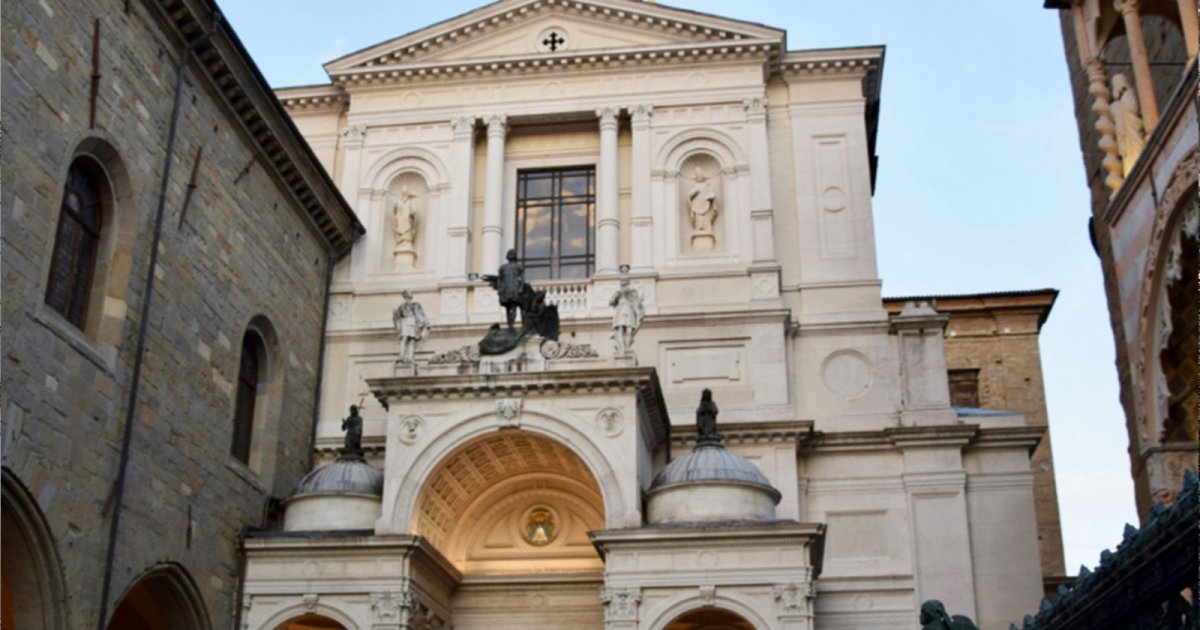CATHEDRAL, Introduction And Interior
 Language: English / USA
Language: English / USA
Hi, my name’s Scott, and I’m your personal guide. Along with MyWoWo, I’d like to welcome you to one of the wonders of the world: Bergamo Cathedral.
The magnificent, late-nineteenth-century white marble facade of the Cathedral contrasts sharply with the simple style of the medieval buildings around it, which are the result of centuries of historical events stretching back 3,000 years, when the place was already inhabited.
The Cathedral is dedicated to Saint Alexander, the patron saint of Bergamo, and was built just after Christianity took hold, in the most important neighborhood of the Roman city, through which a street lined with traders, shops, craft workshops and residential dwellings also ran. After 1100, however, the church was rebuilt in Romanesque style, while the church of Santa Maria Maggiore was also being built nearby.
1459 saw the beginning of the work to extend the cathedral, which was entrusted to one of the most renowned architects of the Renaissance, Filarete, from Florence, who designed a magnificent building. This included the completion of the chapel on the left side, dedicated to Saint Catherine and Saint Jerome, but the work unfortunately came to a halt with the death of Filarete.
After some minor work, the refurbishing resumed in 1611, and the present-day cathedral, dedicated to Saint Alexander, was consecrated in 1693. Further changes were made at the end of the 19th century, with the building of the facade you can see today.
The interior is very bright, spacious and solemn, dominated by the white of the walls, which are adorned with graceful, elegant gilding work.
Among the ingenious eighteenth-century paintings celebrating the lives of the martyrs, I suggest you look for Il martirio di San Giovanni Vescovo, showing the martyrdom of St. John the Bishop by Giovanni Battista Tiepolo: it looks more like a theatrical performance than a martyrdom, with the angel swooping down! I’m sure you won’t be disappointed.
Don’t miss the seventeenth-century wooden Choir behind the altar, and the striking bishop’s throne sculpted by Andrea Fantoni. And if you look carefully, you’ll see that the church contains three of the finest organs in Italy.
An interesting fact: Saint Alexander was a Roman soldier condemned to death because he was a Christian. Legend has it that when the executioner was about to kill him, Alexander appeared as large as a mountain, and the executioner was paralyzed with shock, allowing the saint to escape. He was later captured a second time and executed.



